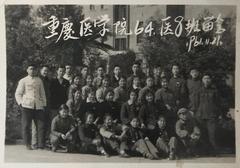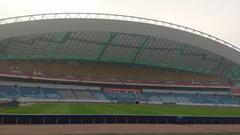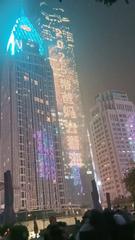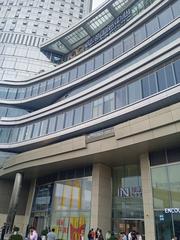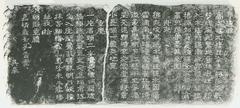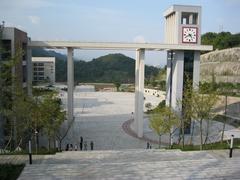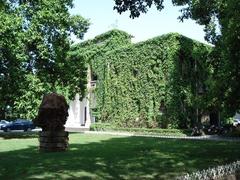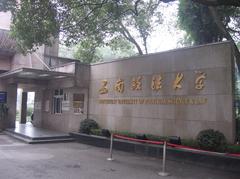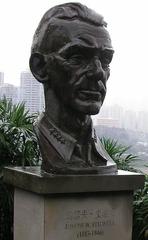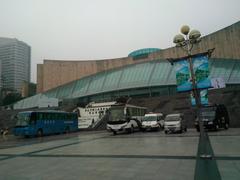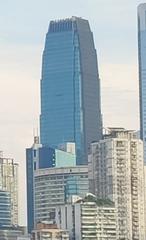Teyuan Garden Visiting Hours, Tickets, and Attractions in Chongqing
Date: 04/07/2025
Introduction: Teyuan Garden’s Historical and Cultural Significance
Teyuan Garden, situated in the heart of Chongqing, is a storied landmark that encapsulates the city’s rich cultural heritage and pivotal role in modern Chinese history. Established in the early 20th century as a private residence and later transformed into a hub for political and diplomatic activity, the garden is renowned for its blend of classical Chinese aesthetics and its enduring significance as a site of historical dialogue. During the Second Sino-Japanese War, Chongqing became China’s wartime capital, and Teyuan Garden emerged as a center for democratic movements and international negotiations. Today, its pavilions, winding corridors, and tranquil water features invite visitors to explore a living museum that commemorates influential figures and key political events. This guide details everything you need to know about Teyuan Garden visiting hours, tickets, accessibility, and surrounding attractions, ensuring an enriching experience for every visitor (chongqingdeeptour.com, chinatripedia.com, ichongqing.info).
Contents
- Introduction
- Early Historical Context of Teyuan Garden and Chongqing
- Wartime Capital and Political Transformation
- Democratic Movements and Political Parties
- Chongqing’s Municipal Status and Urban Development
- Architectural and Cultural Significance
- Practical Visitor Information
- Travel Tips and Nearby Attractions
- Special Events and Cultural Activities
- Visuals and Media
- FAQ
- Conclusion
Early Historical Context: Teyuan Garden and Chongqing
Chongqing, one of China’s oldest continuously inhabited regions, boasts a deep historical narrative dating back to Paleolithic times, including evidence such as the “Wushan Man” from two million years ago (chongqingdeeptour.com). The area’s development under the Ba and Shu cultures introduced architectural elements—wooden structures, sloping roofs, intricate carvings—that influenced later gardens and residences. During the Ming and Qing dynasties, Chongqing’s strategic location at the confluence of the Yangtze and Jialing Rivers propelled it to economic and political prominence, leading to the construction of elegant gardens and mansions. Teyuan Garden is a product of this rich tradition, blending classical Jiangnan garden styles with Chongqing’s mountainous landscape (toolack.com).
Chongqing as Wartime Capital and Teyuan Garden’s Political Role
From 1937 to 1945, Chongqing served as China’s wartime capital following the fall of Nanjing. The city became the political and military nerve center for resistance against Japanese invasion. During this era, numerous official residences, compounds, and gardens, including Teyuan Garden, were adapted to accommodate government officials, military leaders, and foreign diplomats (discoverchinaguide.com). Teyuan Garden served as a discreet but vital meeting place for high-level discussions, with its walled enclosures and private pavilions providing both security and a setting for diplomatic dialogue (chinatripedia.com).
Birthplace of Democratic Movements and Political Parties
Chongqing’s historical significance is further highlighted by its role in the formation of modern China’s democratic parties. In the 1940s, Teyuan Garden and similar compounds became venues for critical negotiations, giving rise to organizations such as the China Democratic League, the China Democratic National Construction Association, and the Jiusan Society (ichongqing.info). Meetings in these spaces contributed to the establishment of the People’s Republic of China and fostered the spirit of multi-party cooperation that remains central to the nation’s political framework.
Chongqing’s Municipal Status and Urban Development
In 1997, Chongqing was elevated to municipality status directly under the central government, recognizing both its historical significance and strategic importance in the Three Gorges Dam resettlement program (ucalgary.ca). This transition spurred urban development and the preservation of historical sites like Teyuan Garden, further embedding them in Chongqing’s civic identity.
Architectural and Cultural Significance
Teyuan Garden exemplifies the integration of traditional Chinese design with Chongqing’s unique terrain. Its architectural elements—wooden pavilions, stone bridges, water features—are thoughtfully adapted to the hillside, reflecting the region’s Ba and Shu heritage (toolack.com). The garden’s layout embodies philosophies of balance and harmony, and its preserved structures and exhibits offer insight into the lives of Chongqing’s Republican-era elite and the city’s transformation through tumultuous periods (chinatripedia.com).
Practical Visitor Information: Visiting Hours, Tickets, and Accessibility
- Opening Hours:
- General public: Daily, 9:00 AM–5:00 PM (last admission 4:30 PM).
- Some areas may close during holidays or special events; check ahead (Wanderlog).
- Admission:
- Free entry for most visitors.
- A nominal fee may apply during special exhibitions or events.
- Valid ID may be required, especially for group visits and during peak season.
- Accessibility:
- Most main pathways are wheelchair accessible, though some hilly areas and upper floors may be challenging.
- Assistance is available upon request.
- Guided Tours:
- Available in Mandarin; limited English interpretation and audio guides.
- Booking a bilingual guide is recommended for international visitors (China Daily).
- Facilities:
- Restrooms, drinking fountains, and small gift shops are on site.
- No large dining facilities, but nearby cafes and restaurants are plentiful.
Site Layout and Features
Teyuan Garden covers approximately 2,000 square meters, with two intertwined three-story buildings including the Daguan Building, surrounded by landscaped gardens and shaded paths. Its design incorporates “borrowed scenery,” framing Chongqing’s hills and cityscape through window views and pavilions.
Key Features:
- Daguan Building: Gray-brick, three-story structure hosting exhibitions.
- Decorative Elements: Upturned eaves, intricate tiles, ornamental ridges, lattice windows.
- Garden Elements: Courtyards, meandering stone paths, pavilions, rockeries, and water features for reflection and relaxation.
Museum Exhibitions and Collections
Permanent Exhibitions
- Wu Yuzhang Memorial Hall: Chronicles the life and achievements of Wu Yuzhang, featuring personal artifacts and documents.
- Wartime Chongqing Gallery: Multimedia displays and archival materials recreate the atmosphere of 1930s and 1940s Chongqing.
- Garden Artifacts and Architecture: Showcases original elements and garden tools.
Thematic and Rotating Exhibitions
- Republican Era Art and Literature
- Diplomatic Encounters: Displays on international visitors and diplomatic events.
- Cultural Heritage Conservation: Interactive exhibits on garden preservation.
Educational Programs
- Guided Tours and Lectures
- Traditional Arts Workshops
- Children’s Discovery Trails
Travel Tips and Nearby Attractions
- Best Time to Visit: Spring and autumn offer the best weather and vibrant scenery.
- Getting There: Accessible via Chongqing Rail Transit (CRT), bus routes, and taxis. Enter “特园” (Teyuan) for accurate navigation.
- Nearby Attractions:
- People’s Liberation Monument: Iconic city landmark.
- Hongya Cave: Traditional architecture and lively dining scene.
- Guiyuan Garden: Known for Osmanthus trees.
- Three Gorges Museum: In-depth historical exhibitions.
Special Events and Cultural Activities
Teyuan Garden regularly hosts commemorative events, festivals, and educational programs focused on Chongqing’s democratic heritage. Check the official website or local tourism platforms for schedules.
Visuals and Media
Visitors are encouraged to take non-flash photographs in most areas. The garden’s architecture and landscaping make it a favorite among photographers, especially during cherry blossom season.
Frequently Asked Questions (FAQ)
Q: What are Teyuan Garden’s visiting hours?
A: Open daily from 9:00 AM to 5:00 PM, last entry at 4:30 PM.
Q: How much does it cost to visit?
A: Admission is generally free; special exhibitions may charge a nominal fee.
Q: Is Teyuan Garden accessible for people with disabilities?
A: Most public areas are accessible, but some steep paths and upper floors may be challenging.
Q: Are guided tours available?
A: Yes, Mandarin-language tours are available; English support is limited.
Q: Can I take photos inside?
A: Non-flash photography is permitted in most areas; check signs for restrictions.
Visitor Experience and Recommendations
Teyuan Garden offers a peaceful retreat and a profound connection to Chongqing’s historical and political heritage. Its exhibitions and architecture provide a window into the past, while guided tours and cultural events enrich the visitor experience. Photography is encouraged, and combining your visit with nearby attractions will enhance your understanding of Chongqing’s cultural landscape.
Plan Your Visit
For current visiting hours, ticket information, and special event updates, check official Chongqing tourism resources or the Teyuan Garden website. Download the Audiala app for personalized travel tips and real-time updates.
Summary
Teyuan Garden stands as a testament to Chongqing’s dynamic history, architectural elegance, and enduring political significance. From its origins as a private residence to its pivotal role in political negotiations and cultural development, the garden remains a must-see destination for tourists, scholars, and anyone interested in the interplay of history, culture, and civic pride. With accessible facilities, immersive exhibitions, and connections to other city landmarks, Teyuan Garden offers a holistic and enriching experience for all visitors (chinatripedia.com, China Daily, ichongqing.info).
Sources and Further Reading
- A Brief History of Chongqing: From Ancient Origins to Modern Metropolis
- Chongqing Travel Guide: Historical Sites
- Chongqing Travel Guide: City Highlights
- Wanderlog: Teyuan Garden Visitor Experience
- China Daily: Teyuan Garden Coverage
- Chongqing: Birthplace of Democratic Parties of China

